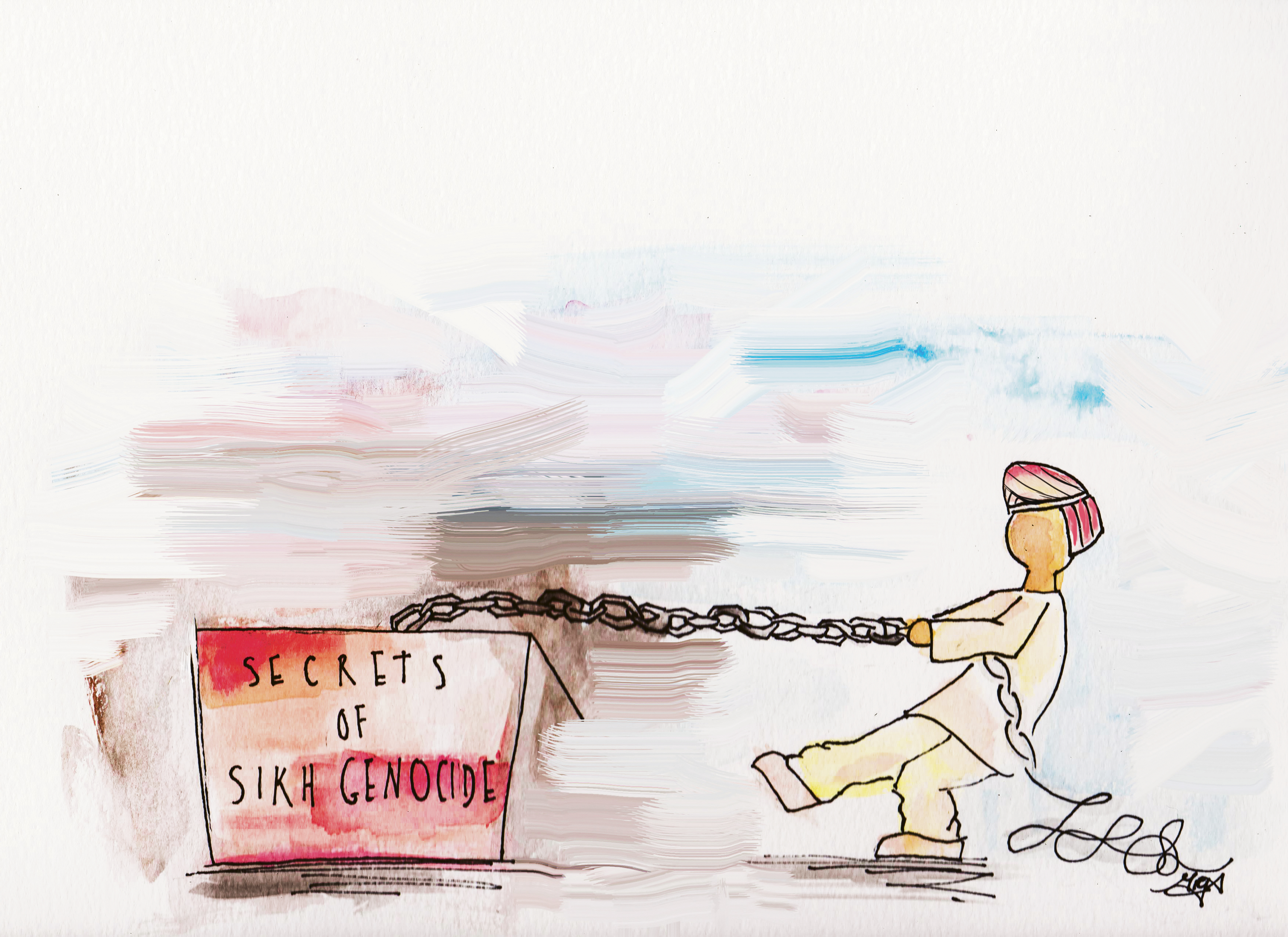Warning: This article contains discussion of graphic violence and rape.
On November 13, the Concordia Sikh Students Association held an event to commemorate the thirtieth anniversary of the 1984 Sikh genocide, during which thousands of Sikhs in India were killed and displaced from their homes. Around twenty people, most of whom were Sikh, attended the event, which featured screenings of short films followed by a discussion.
Two of the videos shown described the events of 1984, when, in June, the Indian government enacted Operation Blue Star, a military operation intended to “break the backbone” of Sikh ‘separatists.’ It ordered the bombing of a prominent gurdwara (a Sikh place of worship) and the massacre of the people inside, under the guise of combating a separatist, terrorist movement in the Sikh-dominated state of Punjab.
The following November, India’s prime minister Indira Gandhi was assassinated by her Sikh bodyguards. In response to the assassination, anti-Sikh mobs engaged in a genocide of approximately 30,000 Sikhs.
Participant experiences and collective knowledge
Many attendees had relatives in India at the time, and some described how their families had been directly affected by the events of 1984.
One participant said that her family lived in South Delhi at the time, and, for three weeks, did not leave their house, during and after the period of genocide. When they did go outside they saw that the gutters were filled with bodies.
“[The bodies] were dismembered, but the only thing you could tell was you could see kara [a metal bracelet Sikhs wear] and you could see the person had long hair.” She said they were left for around two or three months.
“My family had Hindu neighbours and tenants, so when the mob did come, when they were passing the street, these guys stood in front of the gate and warded [the mob] off,” said one participant.
Some of the videos played reflected participants’ experiences, as they depicted refugee camps filled with Sikhs displaced by the genocide, many covered in burns where mobs had poured kerosene on them and tried to light them on fire. Another video showed the aftermath of the genocide twenty years later, speaking to women in the “Widow Colony,” in Western New Delhi, where impoverished women whose husbands and children were killed in the genocide still live today.
All of the videos shown said that, in addition to the systematic killing of Sikh men, women, and children, Sikh women and girls were also targeted with sexual violence – many of the women who survived the genocide were raped while their husbands and children were killed.
An elder Sikh man present at the discussion, whom everyone at the discussion referred to as “uncle,” explained that the tensions between Sikhs and Hindus dated back to the independence of India from British colonial rule. He said that, when India received its independence from Britain, the Hindus asked the Sikhs to remain a part of India instead of splitting into their own country.
Sikh leaders sat down with prominent Hindu figures, including Mahatma Gandhi, and were promised that the Punjab would be an independent state. However, many at the discussion said that the Sikhs suffered great oppression as a minority: they were paid very little for their agricultural products, they had limited access to clean water, they were not allowed to list Punjabi as their first language, and they were forced to adopt Hindu customs.
According to one participant, the Indian government unofficially facilitated the genocide, sending buses full of jailed criminals, who were promised shorter sentences in exchange for their participation, to villages for the purpose of killing the Sikhs.
The prisoners were provided with addresses, voting lists, and other government information, and were authorized to stop trains to look for, and murder, Sikh passengers. Civilians were also encouraged to kill the Sikhs, storming their houses as police turned a blind eye.
Legacy of the 1984 genocide
Speaking to the legacy of the genocide, many agreed that it is important to raise awareness of it, and spoke against “forgiving and forgetting” the past. One participant noted that the Indian government actively tries to hide the truth from the general public.
“One thing I find that’s very shocking is, when you go to India and you look at their history textbooks in high school, even at the university level, there’s no mention of it at all, like absolutely none,” she said.
The uncle brought up the point that, while the Indian government may not want the world to know about what happened, the presence of the Widow Colony serves as a constant reminder for Sikhs about the injustice they still face, and may be intended to prevent further Sikh mobilization and activism.
Some mentioned the immense danger of speaking about the oppression of Sikhs in India. The uncle told the story of Jaswant Singh Khalra, a human rights activist who was extremely vocal about the Sikh children who went missing in the years following the genocide.
Khalra discovered the cremation of around 25,000 unidentified Sikh bodies by the Indian government, and presented his findings to the Indian high court. In 1995, Khalra left India and traveled around Canada to present his findings. According to the uncle, Khalra returned to India knowing it would be a threat to his life, and within 15 days of his arrival, he was abducted by the police and killed.
Some said they had not known much about the genocide prior to attending to the discussion, or knew other Sikhs who knew nothing or were misinformed of the events. The information on the genocide has been coming out recently, and much is still not known, as the Indian government continues to cover up its actions.

